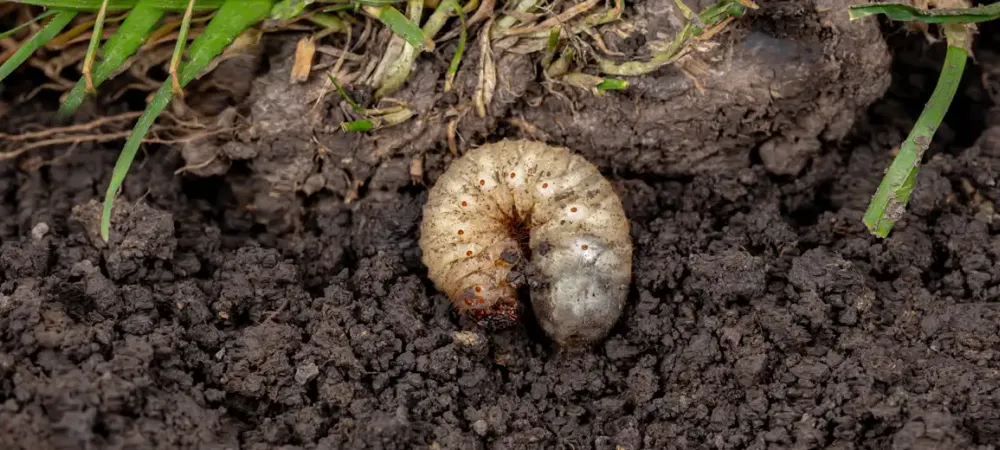North Carolina's Growing Grub Challenge

Grubs are one of the most destructive lawn pests in North Carolina, silently feeding on grass roots and weakening your turf from below. If left untreated, a grub infestation can leave large, brown patches of dead grass and cost homeowners significant time and money to repair. In this Q&A, we'll answer the most common questions about grubs, from how to spot them to the best prevention and control methods.
What Are Grubs and Why Are They a Problem in North Carolina Lawns?
Grubs are the larvae of beetles like Japanese beetles, June bugs, and chafer beetles. These pests burrow into the soil and feed on grass roots, causing significant damage. In North Carolina, grubs are a common problem, especially in the Triangle area. The state's humid climate allows these pests to thrive. According to the North Carolina State University, beetle larvae are one of the most destructive lawn pests in the state, with up to 80 grubs per square yard being a sign of severe infestation.
How Do I Know If I Have a Grub Infestation?
Several signs point to a grub problem. The most common symptom is brown patches on the lawn that can be easily pulled back because the roots have been eaten away. Another indicator is increased activity from animals like raccoons and birds, which dig up lawns to eat the grubs. A study by the NC State Extension found that 65% of homeowners notice animal digging as the first sign of grub infestation.
What Is the Lifecycle of Grubs, and When Are They Most Active?
Grubs typically hatch in late summer and begin feeding on grassroots immediately. As temperatures drop, they burrow deeper into the soil to overwinter. In the spring, they resume feeding before transforming into adult beetles. Grub damage is most noticeable in late summer to early fall, with larvae feeding aggressively on grass roots. A typical grub can consume its own body weight in grass roots each day.
How Can I Control Grubs in My Lawn?
- Prevention: The best defense against grubs is applying preventive insecticides like imidacloprid in early summer before eggs hatch.
- Natural Methods: For eco-conscious homeowners, beneficial nematodes can be introduced to naturally kill grubs. According to a study by the University of Maryland, these nematodes can reduce grub populations by up to 70%.
- Chemical Control: Products containing chlorantraniliprole are highly effective and safe for lawns. This treatment works best when applied early, reducing the grub population before it causes visible damage.
Grubs can silently destroy your lawn, but acting early can prevent significant damage. If you live in Chapel Hill, Hillsborough, or anywhere else in the Triangle and notice any signs of grub activity, contact Triangle Lawn Care for a thorough inspection and professional lawn care services.
